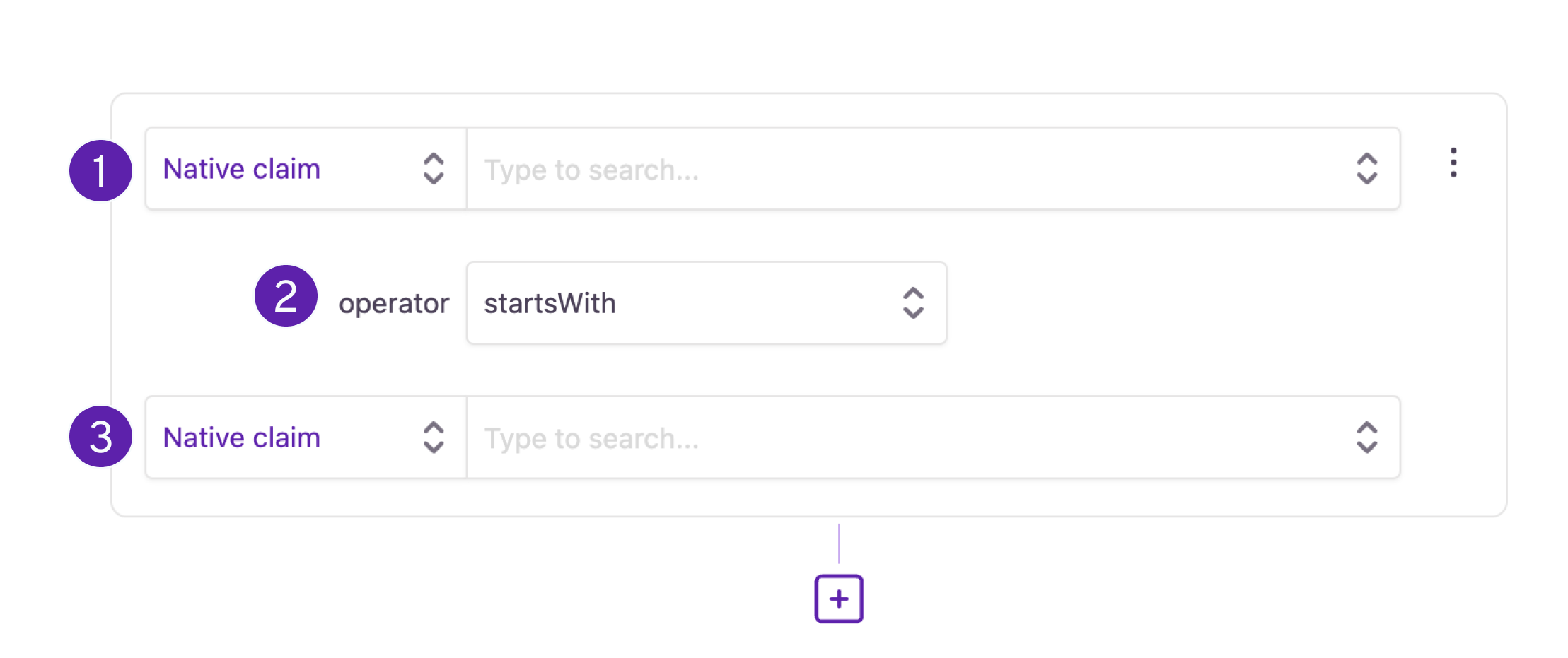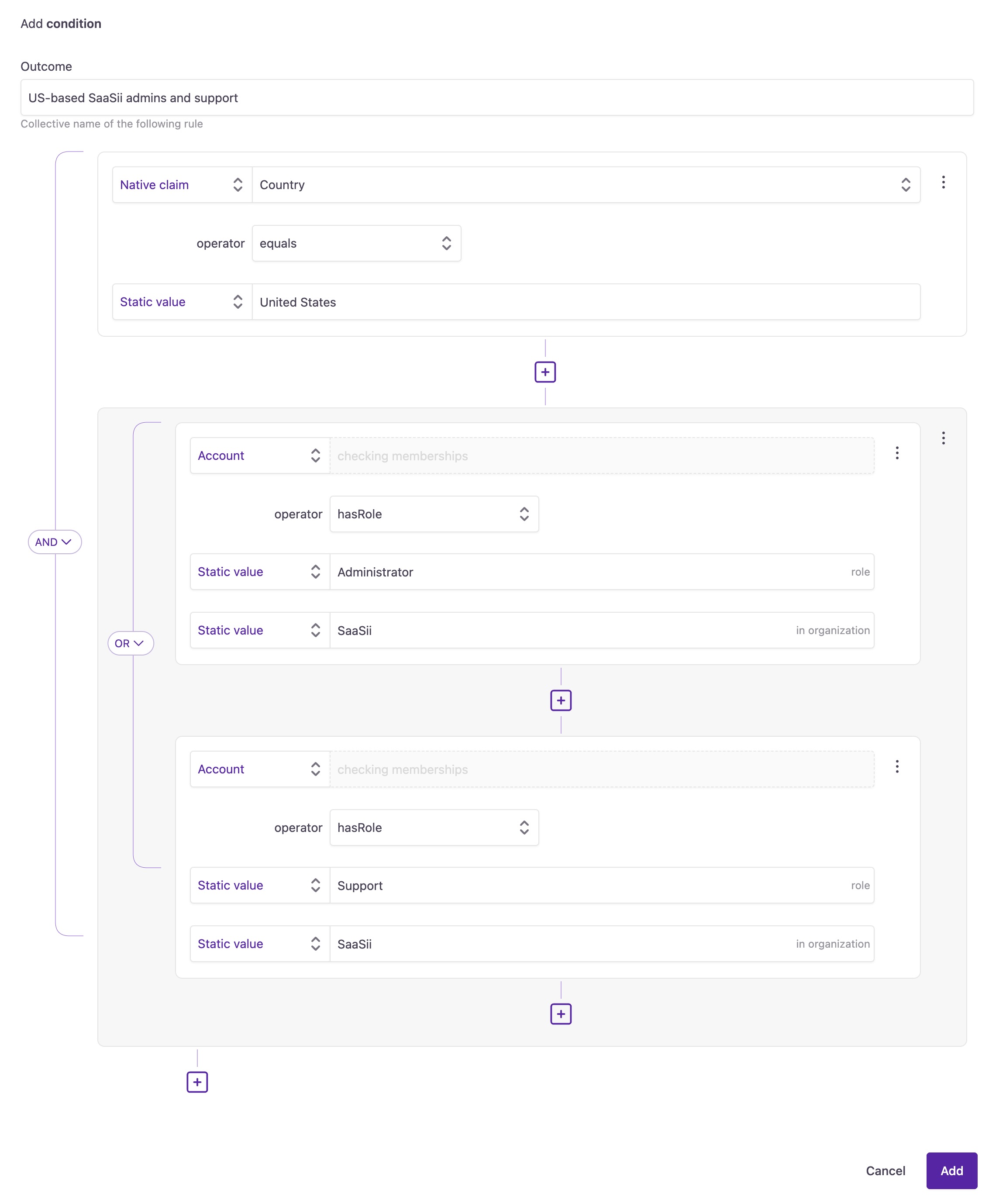Rule builders
Rule builders enable the creation and management of custom rules for user journeys and A/B testing scenarios. Integrated within the Journey Builder's condition step and the A/B testing setup, rule builders allow you to define conditions and variants based on specific customer attributes, behaviors, or other criteria. Whether you're tailoring authentication flows to enhance customer experience or testing different approaches to optimize outcomes, rule builders provide the flexibility and control you need to implement sophisticated logic without writing any code.
Components of a rule
Each rule within the rule builder is composed of three key components: the first operand, the operator, and the second operand.
Together, these components form a logical expression that determines how conditions are evaluated in customer journeys and A/B testing scenarios.

| Rule component | Name | Description |
|---|---|---|
| 1 | First operand | The first operand typically represents a dynamic element. In the Journey Builder condition step it can be a native claim, local variable, context variable, or account variable. In A/B testing, it can be a native claim or a context variable. |
| 2 | Operator | The operator defines the comparison or action to be performed, such as startsWith, endsWith, contains, regexMatch, or equals. |
| 3 | Second operand | The second operand is the target of the comparison. For the Journey Builder condition step it can be a static value, another native claim, local variable, or context variable. In A/B testing, it can be a static value, native claim, or context variable. |
Rule groups and nested rules
In rule builders, you can create complex logical expressions by combining multiple rules using "and" or "or" operators. These combinations, known as rule groups, allow you to apply multiple conditions simultaneously. Additionally, you can create inner groups, or nested rules, rules within rules, to further refine your logic. This feature is especially useful when you need to check for multiple conditions that are interdependent, allowing you to tailor your authentication flows or A/B testing scenarios with precision.

In this example, conditions are combined for US-based admins and support roles within an organization using nested rules and logical operators.
Updated 3 months ago
